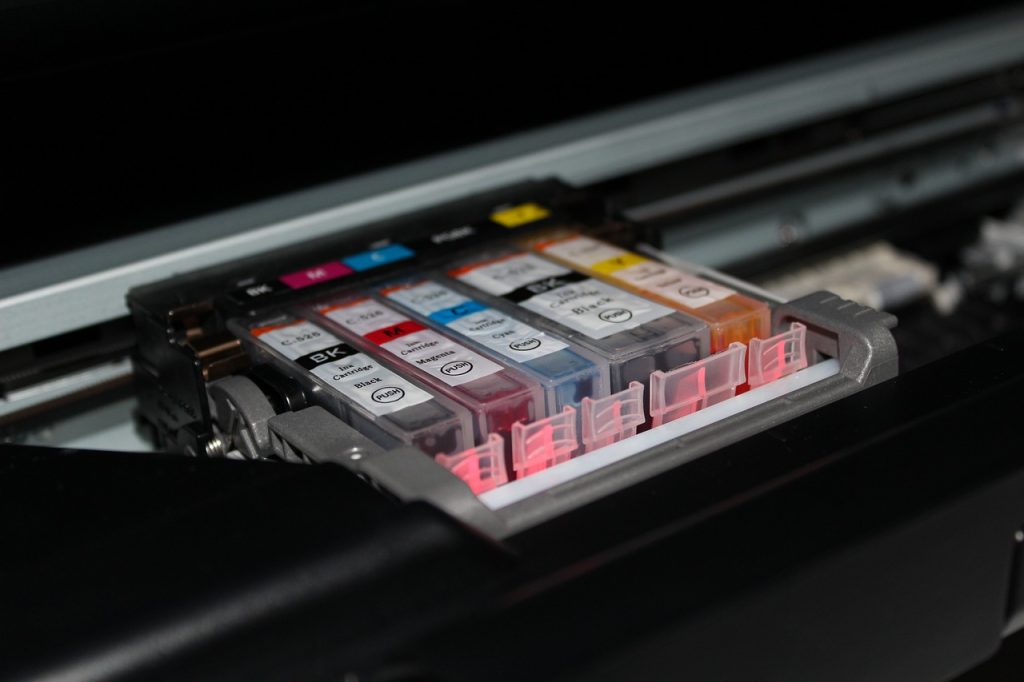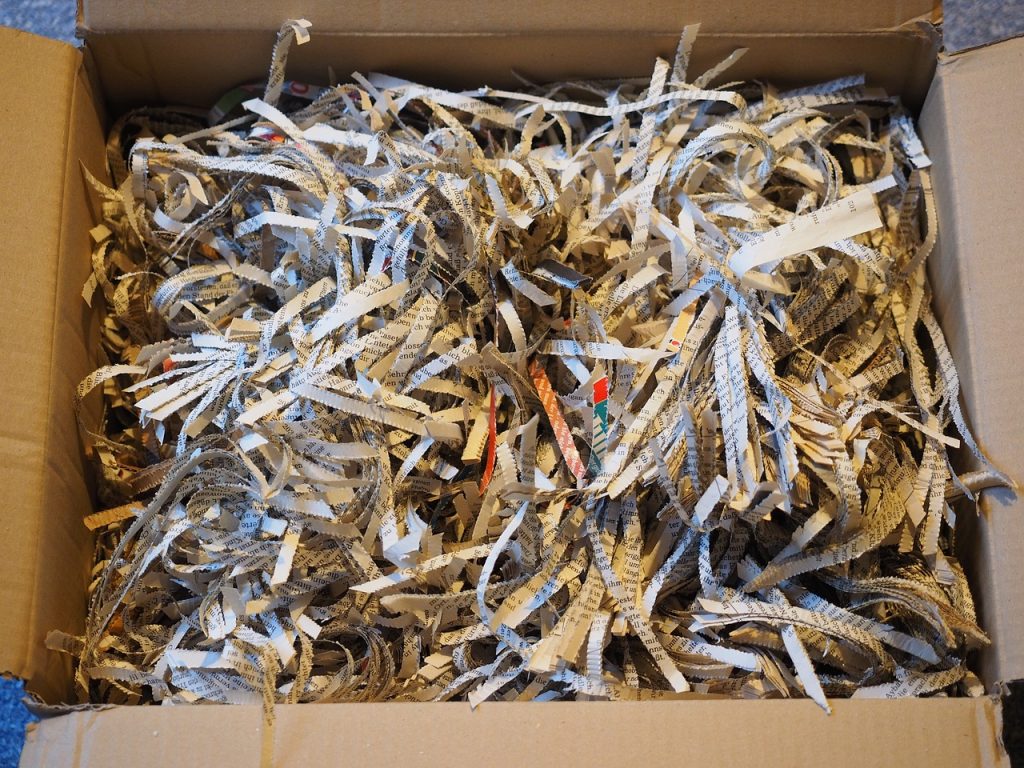- Understand the basics of printer cartridges and their components.
- Recognize the importance of cartridge recycling for the environment and society.
- Decode the recyclable elements in toner cartridges.
- Explore the different forms and functions of ink cartridges.
- Incorporate recycling practices into daily business strategies.
- Participate in recycling programs offered by brands like HP and Brother.
- Refill your printer cartridges following precautions and best practices.
- Contribute to eco-friendliness by consistently recycling and reusing cartridges.
Introduction to Recycle Printer Cartridges: A Step Towards Eco-Friendliness
In today’s world, it’s essential that we find an eco-friendly way to recycle ink cartridges. Beyond helping the environment, ink cartridge recycling can save you money. You’re probably wondering, how do I recycle? It’s quite simple and many providers even offer free collection of used cartridges. Furthermore, many retailers offer free collection boxes to make the process even more convenient for you.
What happens to the ink, ink, ink and more ink from the cartridges you ask? Majority of these components can be repurposed. Some companies undertake the process of refilling ink into these cartridges to be reused. While this might result in a slight dip in print quality, it significantly reduces the cost and environmental impact. Every ink cartridge recycled is a step towards being more eco-friendly.
So now that we’ve handled printer cartridge ink, what about toner? One way to recycle toner cartridges is to return them to the manufacturer. Some companies offer promo codes or discounts for every used cartridge you return. But that’s not all, remember about saving the printer paper too. Both these measures simply add to the environmental benefits. Furthermore, having a permanent collection setup will help you recycle ink cartridges consistently in the long run.
To conclude, recycling is not just about doing the right thing for the environment, but also about taking a smart step towards cost savings. The next time you’re ready to toss an ink cartridge into the trash, just remember all the benefits of recycling. Wielding the power of print, print and more print can indeed contribute to an eco-friendly tomorrow.
Understanding the Basics of Printer Cartridges: Their Types and Components
Before diving headfirst into the process of recycling printer cartridges, it’s crucial to first understand the basics of these components. To put it simply, printer cartridges are the cores of printers. They consist of two primary types: ink cartridges and toner cartridges. Ink cartridges work with inkjet printers, they use liquid ink to produce print on paper. Toner cartridges, on the other hand, work with laser printers using a fine powder (toner).
An essential part of the printer cartridge that you’ll come across when you’re exploring your buying guide is the drum brother. This drum typically forms part of the toner cartridge and is chargeable for transferring the toner powder to the paper during the printing process.
The mainstay of printer cartridges is their internal components that you can’t overlook when considering recycling. Basically, cartridges are made up of plastic, metal, foam, and residual ink or toner. All these components require a different form of handling when it comes to recycling. It’s essential to have this knowledge as it reduces the likelihood of causing environmental harm during the cartridge recycling process.
To conclude, understanding the basics of printer cartridges and their components is essential for proper recycling. Whether it’s ink cartridges or the drum brother component, having a clear knowledge base will ensure the recycling process is eco-friendly and efficient, preserving our planet for future generations. So, the next time you go through your buying guide for printers, bear in mind the importance of cartridge recycling.
Why is Cartridge Recycling Important? How it Benefits Our Environment and Society
Why’s cartridge recycling so crucial, you may wonder? Not only does it headline the list of eco-friendly acts we can adopt but it also reaps immense benefits for society and our environment. We often overlook or underrate the impact of recycling cartridges but, in reality, it’s a significant step towards maintaining ecological balance. Cartridge recycling includes both ink cartridges and printer cartridge ink & toner. Moreover, recycling isn’t just an act; it’s a process that involves several steps and requires dedicated efforts.
When cartridges are recycled, the plastic and metal components are reused, substantially reducing waste. That’s why cartridge recycling is counted among the most effective ways to help our environment. Recycling isn’t just recycling old items, it’s a philosophical return to nature; a way to give back what we’ve taken. Every time we return a cartridge for recycling, we’re saying ‘yes’ to a greener future.
Furthermore, cartridge recycling also benefits our society by creating jobs and promoting green technology. The process of cartridge recycling might seem tedious, but it actually stimulates economy by creating an entire industry around the refurbishment and resale of recycled cartridges. So, not only does cartridge recycling help us save the environment, but it’s also an act of good citizenship.
In conclusion, cartridge recycling isn’t just an eco-friendly act, it’s a moral responsibility. Just like a return to more sustainable ways of living, cartridge recycling should be at the top of our green-living list. Remember, every recycled cartridge can make a world of difference.
Decoding the Recyclable Elements in Toner Cartridges: A Deep Dive into their Composition
Toner cartridges, commonly utilized in laser printers, come laden with an array of toner and other elements, many of which can be surprisingly recyclable. When you’ve exhausted your printer cartridge supply, you’re left with empty cartridges. But before you dispose of these empty cartridges, take a moment to decode their composition and you’ll discover a potential treasure trove of recyclable elements.
The most notable element in toner cartridges is, of course, the toner itself. Toner is a powder-like material that’s utilized to create the printed text and images on paper. This toner contains a high quantity of iron, which subsequently makes it highly recyclable. In this way, your seemingly exhausted toner cartridges are essentially a rich source of recyclable iron the moment they’re empty.
Furthermore, in addition to iron, the toner cartridges also house other recyclable components such as plastic and metal parts. The outer casing of empty ink cartridges, for instance, is predominantly made of plastic, which could certainly find a second life once recycled. Similarly, several metal elements found in the cartridges’ machinery can also be extracted and repurposed in various industrial applications.
In essence, the composition of toner cartridges underscores our society’s capacity to transform seemingly mundane office amenities into vital environmental sustainability tools. By recycling empty cartridges responsibly, not only do we reduce landfill waste and conserve resources, we also contribute to a more sustainable, eco-friendly future. In a nutshell, our toner recycling habits play a vital role in fostering a cleaner, greener environment.”
Exploring the World of Ink Cartridges: Forms, Functions and Possibilities of Recycling
Understanding ink cartridges begins by exploring their different forms, functions and recycling potential. These crucial components of printers, especially inkjet models, house the ink used in printing documents and pictures. Ink cartridges come in diverse types, including those specifically designed for photo printing, color cartridges and black cartridges. It’s not uncommon to find printer cartridges tailored for particular printer models, enhancing the printing performance.
Printer cartridges, apart from dispensing ink for printing tasks, contribute to maintaining the optimum functionality of your printer. They’re designed to work effectively with specific printers, resulting in high-quality prints and preventing printer issues. Analysing cartridges, you’ll find they often consist of components that can be broken down and recycled, paving the way for cartridge recycling.
Recycling ink cartridges is an eco-friendly approach to waste management. Used cartridges can be collected, dismantled, and the materials repurposed to make new items. Recycled cartridges can be used to manufacture different products, reducing the demand for raw materials and the environmental impact associated with their extraction and processing. Beyond this, cartridges and their ink can be harmful if improperly disposed of – recycling helps mitigate such potential environmental hazards.
Inkjet cartridges, for example, are composed of plastics, metals, and other materials that can be recycled and also have a refill potential. Recycling not only helps the environment but also fosters sustainability and can stimulate job creation within the local economy. Ultimately, the recycling of printer cartridges presents a superior and greener alternative to mere waste disposal.
Incorporating Recycle and Recycled Practices: Essential Steps in Cartridge Recycling
Incorporating recycle practices into daily business strategies can seem daunting, but it’s an essential step in the process of cartridge recycling. The ammo for our printers – whether ink or toner – happens to be encased in cartridges that can greatly benefit from toner recycling, marking the first step towards eco-friendly operations.
At first glance, one might question, how can used up cartridges be recycled? But delve a bit deeper, you realize that every part of a cartridge can be recycled, producing renewed, recycled cartridges from almost nothing, and amazingly, diverting harmful e-waste away from our landfills. Thus, to gain momentum in this rarely ventured territory, starting a recycling program for cartridges is the way forward.
Implementing a recycling program as a part of your operation isn’t just about navigating the path to being eco-friendly, but it also generates economic value. When recycled cartridges are made available for repurchase, customers looking to get a bang for their buck are more likely to return to your business. The cycle of sell, return, recycle, and return again not only offers steady income but significantly reduces operation costs in the long run. This is a step up from traditional methods offering only single-use cartridges.
Imagine the possibilities if we all invested in a recycling program. A world where cartridges are recycled, refilled, and returned is within our reach. This eco-friendly practice ensures we don’t have to sacrifice the need for printing for the sake of our environment. Recycling is not just a mindset. It’s a lifestyle for a greener planet. And it starts with recycled cartridges.
HP’s Commitment to Recycling: A Closer Look at their Printer Cartridges Recycling Program
HP’s commitment to recycling is an outstanding example of corporate responsibility towards the environment. The tech juggernaut’s recycling program prioritizes cartridge recycling, especially print cartridge and toner products. HP’s recycling program doesn’t only recycle, but boldly upholds the principle that curbing e-waste begins with recycling. They’ve established benchmarks for excellent recycle practices in the tech world. They’ve demonstrated their commitment to recycling by making it easier to recycle HP printer cartridges.
The essence of HP’s recycling program lies in the company’s understanding of the importance of cartridge recycling. Realizing the environmental footprint of discarding print cartridges, HP has instigated a method to recycle and repurpose printer cartridges. HP’s dedication to recycling has led to the development of an efficient recycling program that enhances sustainability.
Unearthing the critical need for recycling, the recycling program by HP has motivated other tech companies to follow suit. The remarkable recycling program by HP ensures that every bit of the print cartridge- be it ink or toner is utilized effectively or disposed of in an environmentally-friendly method. This recycling program is a testament to HP’s devotion towards preserving the environment.
HP not just recycles, but encourages its customers to recycle too. The company’s commitment to recycling reflects in their ongoing efforts to improve the recycling rates of their printer cartridges. Their cartridge recycling initiative has led to a significant reduction in e-waste. Recycle today with HP’s recycling program and contribute towards a sustainable future.
Printer Brands and Sustainability: Brother Printer Cartridges and Their Recyclable Features
When we weigh up printer brands and sustainability, Brother is a brand that stands out due to their commitment to the environment, specifically with their printer cartridges. Brother printer cartridges are designed with recyclable features, reflecting the brand’s pledge towards eco-friendliness. This isn’t limited to just their ink cartridges; even their Brother drums, sometimes referred to as ‘drum Brother’, are constructed to be recyclable.
Brother emphasizes the importance of recycling empty cartridges, making it a focal point in their sustainability plans. When you exhaust the ink in your cartridges, don’t just toss them away. Remember, these items are recyclable and are a key part of Brother’s green initiative. Each of these empty cartridges represents a chance to limit the waste that ends up in landfills.
Brother’s approach to this issue is noteworthy. To reduce waste, they’ve explored the functionality of their product, resulting in a more sustainable model for their printer cartridges. By reducing the amount of non-recyclable material in their products, Brother echoes the sentiments of other industry giants like HP with their robust recycling programs.
As a consumer, you have a critical role in this effort from Brother. By recycling your empty cartridges, you’re part of the solution to a more sustainable future. So next time you’re changing out the cartridges in your Brother printers, remember that these products aren’t waste—they’re recyclable materials that play a part in safeguarding our environment.
Delving Into the Cartridge Recycling Program: Understanding its Impact and Potential
Delving into a cartridge recycling program, you’ll quickly uncover its vast impacts and potential. It’s not just about contributing to an eco-friendly initiative; it goes deeper than that. Recycling program after recycling program has shown substantial benefits, not only for the environment, but also for businesses and individuals alike. The potential rewards are profound.
When you choose to recycle your printer’s cartridge, you’re stepping into a circular economy model, supported by many brands, including HP and Brother. These programs encourage the recovery and reuse of valuable materials typically wasted in old cartridges, thus decreasing the demand for newly extracted resources. The longevity and durability of cartridges offered by established brands like HP and Brother display the prowess of their cartridge recycling programs.
Both HP and Brother have demonstrated their commitment to sustainability, even structuring cartridge recycling rewards into their programs. These rewards not only incentivize participation but highlight the emphasis these companies place on eco-focused practices. So, print away, knowing that you’re part of a larger initiative aiming to minimize environmental impacts.
When looked at closely, the components of cartridges, including their ink and toner, can easily be recycled. When these elements are properly recycled, they’re turned into new, usable products, illustrating the importance of companies’ recycling programs.
With every print, you’re creating an opportunity to support these recycling programs. The potential for large-scale impact is massive. Reusing cartridge materials minimizes waste and inspires innovative ways to conserve our resources. By recycling your cartridges, you can contribute significantly to these transformative impacts.
Recommendations for Refilling Your Printer Cartridges: Precautions and Best Practices
Printer cartridges are integral to your printer’s functionality; hence, learning the best practices to refill your printer cartridges is essential. It’s not just about understanding how to print, but also grasping the imperative skill of properly refilling ink in printer cartridges to extend their life and optimize their performance.
At first, it might seem daunting to disassemble and refill your printer cartridges. Still, with careful precautions and proper execution of best practices, you will not only become adept in this process but also contribute significantly towards eco-friendliness. Each refilled cartridge means one less discarded cartridge adding to the environmental waste, thus actively fostering cartridge recycling.
When you refill a printer cartridge, ensure to carefully follow manufacturer instructions. Each type of printer cartridge – be it ink or toner – might have specific instructions unique to its construction and functionality. Consistently using refill kits designed for your specific cartridges guarantee better print results.
While refilling, don’t rush the process. If the ink is injected too quickly, it may lead to leaking or poor print quality. Also, don’t overfill the cartridges. A common precaution to note is to avoid touching the chip or the nozzle of the cartridge. Contaminating these parts may result in poor functioning of the printer or even complete cartridge failure.
Contributing towards printer brands like HP and Brother’s commitment towards sustainability, refilled cartridges cut down considerable waste otherwise headed for landfills. It’s high time we made a collective move towards following recycled and recycle practices, including cartridge recycling.
Conclusion: Harnessing the Power of Recycle and Recycling in Our Daily Lives with Toner and Ink Cartridges
In conclusion, it’s vital to harness the power of recycling, particularly ink cartridge recycling, in our daily lives. By taking small steps like choosing to recycle printer cartridges and recycle ink cartridges, we’re contributing to eco-friendliness and sustainability. There are numerous types of printer cartridges on the market, including ink and toner cartridges and understanding their different components can further encourage us to recycle.
The importance of cartridge recycling stems from its profound benefits to our environment and society. Toner cartridges, for instance, are made of recyclable elements that can be reused or repurposed, helping to decrease landfill waste and save resources. The same applies to ink cartridges, whose forms and functions don’t preclude their recyclability. By incorporating recycling practices like cartridge recycling into our routines, we’re actively participating in a healthier, greener future.
Many printer brands, like HP and Brother, demonstrate notable commitments to recycling. With their well-designed programs for printer cartridges recycling, these companies are setting high standards in the printer industry. Their ink and toner cartridges come with recyclable features, demonstrating possibilities for effective recycling. Similarly, the cartridge recycling program overall has significant potential impact, pushing us to recycle, recycle, and recycle again.
Let’s not forget, if you decide to refill your toner or ink cartridges, precautions and best practices are essential. It’s not just about ‘recycle, recycle, recycle,’ but also about ‘reduce and reuse.’ Together, we can give printer cartridges a longer life and contribute to the recycling revolution in our day-to-day actions.




